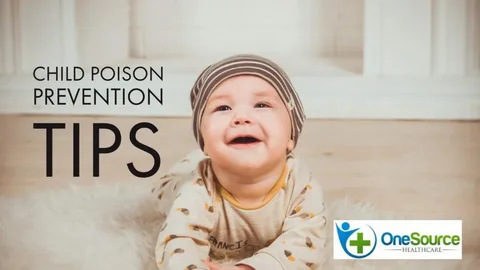Lead poisoning is a hidden global crisis affecting one in three children around the world. While it might not always make headlines, its effects are severe — from intellectual disabilities to long-term health issues. UNICEF reports that most of the children with the highest blood lead levels live in low- and middle-income countries in Asia and Africa, though children in Central and South America, Eastern Europe, and even high-income countries are also at risk.
The good news is that lead poisoning is preventable. Governments, industries, and communities can take action today to protect children and ensure a healthier future. Here’s a closer look at the five essential steps recommended by experts to tackle this silent epidemic.
Understanding Childhood Lead Poisoning
Lead is a toxic metal that can accumulate in the body over time. Unlike other environmental hazards, lead exposure often goes unnoticed until serious health problems appear. Children are especially vulnerable because their developing brains and bodies absorb lead more easily than adults.
Common sources of lead include old paint, contaminated soil, leaded pipes, certain toys, and even some imported cosmetics. Prolonged exposure can cause developmental delays, learning difficulties, and behavioral issues. In severe cases, it can even lead to death.
Why It’s a Global Issue
UNICEF estimates that millions of children worldwide suffer from elevated blood lead levels. The problem is most acute in low- and middle-income countries, where regulations may be weaker, and industrial pollution or unsafe housing materials are widespread. But no region is completely safe — lead contamination can be found in cities and rural areas in high-income countries too.
Five Actions Governments Can Take
-
Ban or Regulate Lead Products
Governments need to enforce strict regulations on products containing lead, such as paint, pipes, and consumer goods. Ensuring that these items meet safety standards can drastically reduce exposure in homes, schools, and communities. -
Public Awareness Campaigns
Awareness is key. Educational campaigns can teach families about the dangers of lead, where it’s found, and how to prevent exposure. Knowledge empowers communities to take action for their children’s health. -
Regular Blood Lead Screening
Routine testing for children can help identify lead poisoning early. Governments should support accessible testing programs, especially in high-risk areas, to detect and treat lead exposure promptly. -
Infrastructure Upgrades
Replacing old water pipes, removing lead-based paints, and ensuring safe construction materials are essential steps. Governments can invest in safer infrastructure to prevent lead from entering homes and schools. -
Policy and Funding Support
Strong policies backed by proper funding are essential for long-term impact. Governments should allocate resources for research, prevention programs, and treatment initiatives targeting lead poisoning.
Actions the Private Sector Can Take
-
Safe Manufacturing Practices
Companies should avoid lead in their products and adopt safer alternatives. Responsible manufacturing reduces the risk of lead exposure in children. -
Corporate Social Responsibility Programs
Businesses can sponsor community awareness campaigns, lead screening initiatives, and infrastructure projects to protect children in vulnerable areas.
Civil Society and Community Action
-
Grassroots Advocacy
Local NGOs and community groups can educate families about lead hazards and advocate for policy changes at the local level. -
Safe Practices at Home
Parents can take simple measures such as washing hands frequently, cleaning dusty surfaces, and avoiding old lead-based toys or cookware. -
Collaboration with Schools
Schools can incorporate lead-awareness education and ensure classrooms and playgrounds are free from lead hazards.
The Importance of a Coordinated Approach
Ending childhood lead poisoning requires a combined effort. Governments, industries, and communities must work together. While policy and regulation are crucial, everyday actions by parents and educators also make a significant difference.
UNICEF’s report underscores that every child deserves a lead-free environment. By taking these five key actions, the world can drastically reduce the burden of lead poisoning, protect children’s health, and ensure future generations thrive without the hidden threat of toxic exposure.
Conclusion
Childhood lead poisoning may be a silent crisis, but it’s preventable. Awareness, regulation, infrastructure improvement, and community action can stop lead from harming millions of children worldwide. Every small step counts — from government policies to daily habits at home. Protecting children from lead exposure is not just a health issue; it’s a moral responsibility.
Read More: Top 5 Daily Habits for a Healthier Heart



1 Comment
You actually make it seem so easy with your presentation but I find this topic to be really one thing that I believe I’d by no means understand. It seems too complex and very huge for me. I am having a look ahead in your subsequent publish, I¦ll try to get the hold of it!